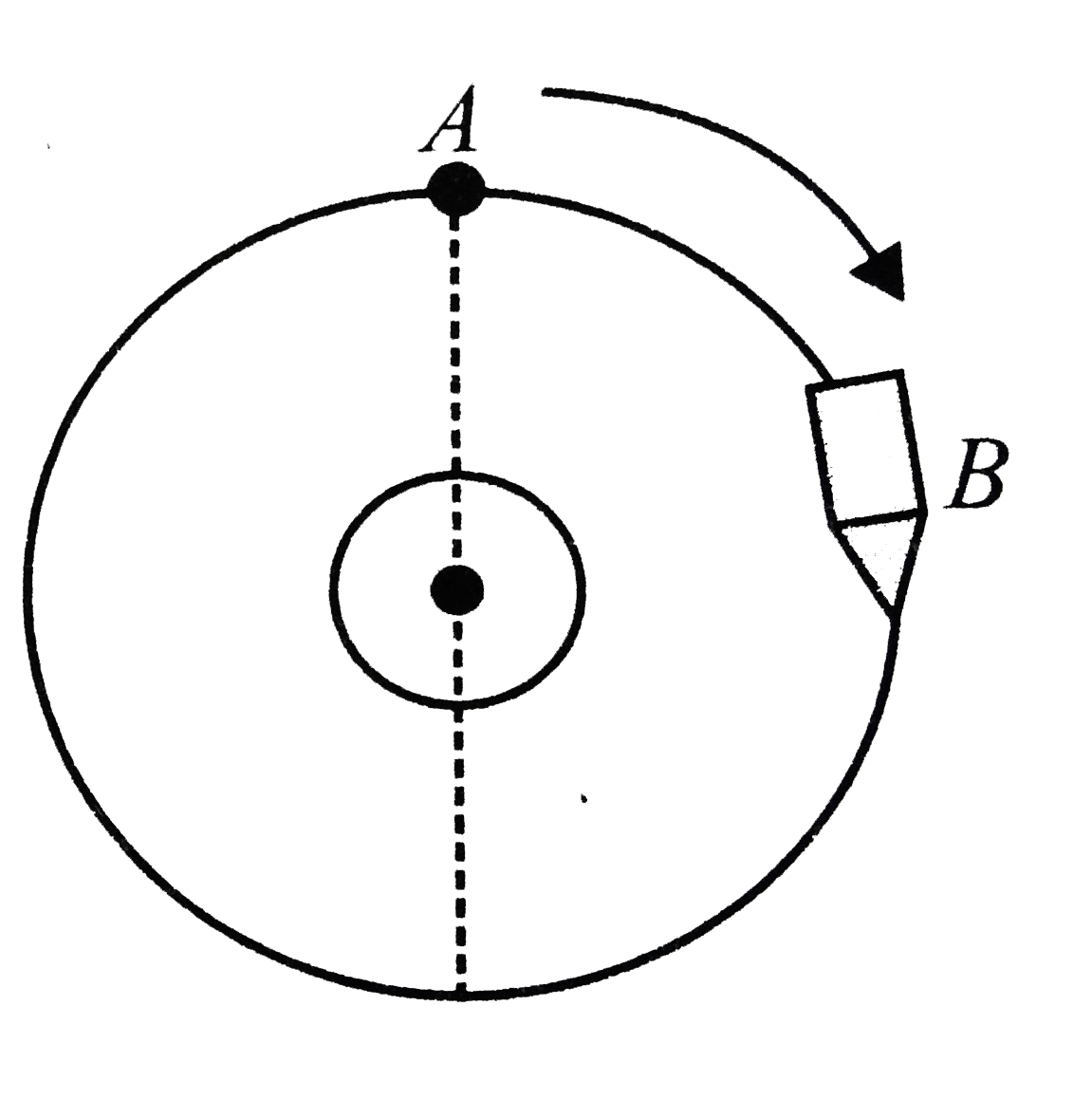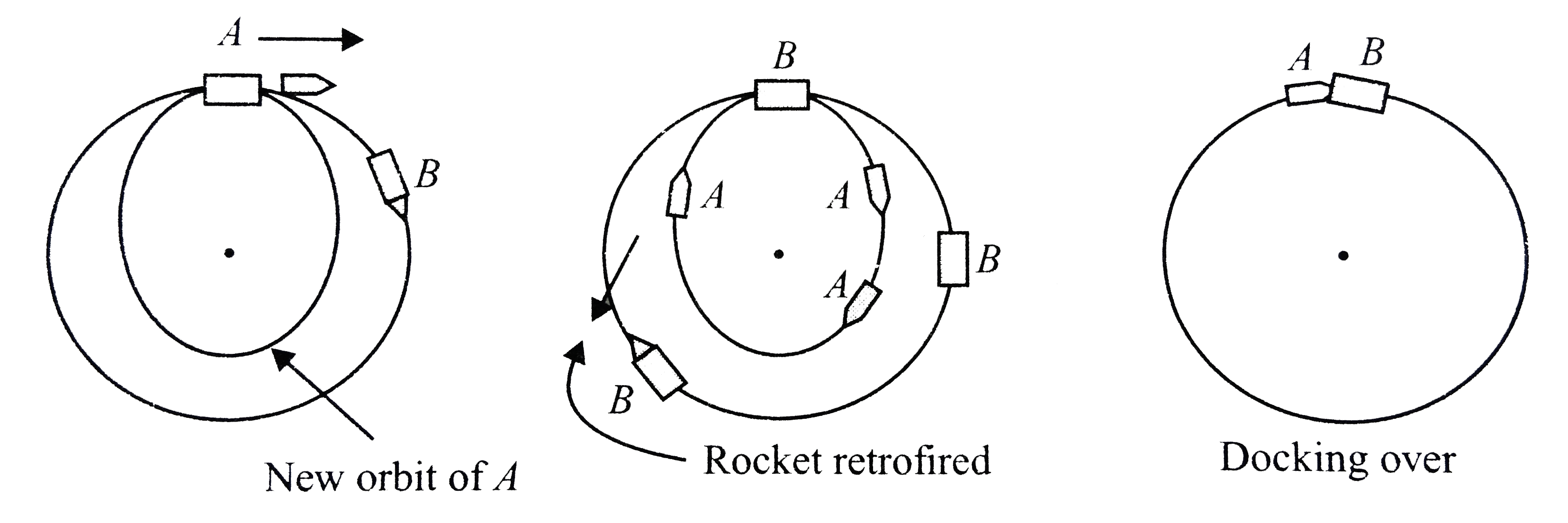An astronaut is looking down on earth's surface from a space shuttle at an altitude of 400 km. Assuming that the astronaut's pupil diameter is 5mn and the wavelength of visible light is 500 nm, the astronaut will be able to resolve linear objects of the size about
0.5 m
5 m
50 m
500m
Angular limit of resolution xl=1.22λa∴x=1.22×500×10−9×400×1035×10−3=50m
Similar Questions
An astronaut is looking down on earth's surface from a space shuttle at an altitude of 400km. Assuming that the astronaut's pupil diameter is 5mm and the wavelength of visible light is 500nm. The astronaut will be able to resolve linear object of the size of about .
View SolutionA cord of length 64m is used to connected a 100kg astronaut to spaceship whose mass is much larger than that of the astronuat. Estimate the value of the tension in the cord. Assume that the spaceship is orbiting near earth surface. Assume that the spaceship and the astronaut fall on a straight line from the earth centre. the radius of the earth is 6400km.
View SolutionTwo stars are 10 light years away from the earth. They are seen through a telescope of objective diameter 30 cm. The wavelength of light is 600nm. To see the stars just resolved by the telescope, the minimum distance between them should be (1 light year =9.46×1015m) of the order of :
View SolutionAn unmanned satellite A and a spacecraft B are orbiting around the earth in the same circular orbit as shown.
 The spacecraft is ahead of the satellite by some time. Let us consider that some technical problem has arisen in the satellite and the astronaut from B has made it correct. For this to be done docking of two (A and B) is required (in layman terms connecting A and B). To achieve this, the rockets of A have been fired in forward direction and docking takes place as shown in the figure below:
The spacecraft is ahead of the satellite by some time. Let us consider that some technical problem has arisen in the satellite and the astronaut from B has made it correct. For this to be done docking of two (A and B) is required (in layman terms connecting A and B). To achieve this, the rockets of A have been fired in forward direction and docking takes place as shown in the figure below:

Take mass of the earth =5.98×1024kg
Radius of the earth =6400km
Orbital radius =9600km
Mass of satellite A=320kg
Mass of spacecraft =3200kg
Assume that initially spacecraft B leads satellite A by 100s, i.e., A arrives at any particle position after 100s of B’s arrival. Based on the above information answer the following questions
The initial total energy and time period of satellite are, respectively,
View SolutionAn unmanned satellite A and a spacecraft B are orbiting around the earth in the same circular orbit as shown.
 The spacecraft is ahead of the satellite by some time. Let us consider that some technical problem has arisen in the satellite and the astronaut from B has made it correct. For this to be done docking of two (A and B) is required (in layman terms connecting A and B). To achieve this, the rockets of A have been fired in forward direction and docking takes place as shown in the figure below:
The spacecraft is ahead of the satellite by some time. Let us consider that some technical problem has arisen in the satellite and the astronaut from B has made it correct. For this to be done docking of two (A and B) is required (in layman terms connecting A and B). To achieve this, the rockets of A have been fired in forward direction and docking takes place as shown in the figure below:

Take mass of the earth =5.98×1024kg
Radius of the earth =6400km
Orbital radius =9600km
Mass of satellite A=320kg
Mass of spacecraft =3200kg
Assume that initially spacecraft B leads satellite A by 100s, i.e., A arrives at any particle position after 100s of B’s arrival. Based on the above information answer the following questions. After once returning to the original point, i.e., the place from where the rockets have been fired, in which direction and with what extent the rockets have to be fired from the satellite to again come back in the original orbit?
View SolutionAn unmanned satellite A and a spacecraft B are orbiting around the earth in the same circular orbit as shown.
 The spacecraft is ahead of the satellite by some time. Let us consider that some technical problem has arisen in the satellite and the astronaut from B has made it correct. For this to be done docking of two (A and B) is required (in layman terms connecting A and B). To achieve this, the rockets of A have been fired in forward direction and docking takes place as shown in the figure below:
The spacecraft is ahead of the satellite by some time. Let us consider that some technical problem has arisen in the satellite and the astronaut from B has made it correct. For this to be done docking of two (A and B) is required (in layman terms connecting A and B). To achieve this, the rockets of A have been fired in forward direction and docking takes place as shown in the figure below:

Take mass of the earth =5.98×1024kg
Radius of the earth =6400km
Orbital radius =9600km
Mass of satellite A=320kg
Mass of spacecraft =3200kg
Assume that initially spacecraft B leads satellite A by 100s, i.e., A arrives at any particle position after 100s of B’s arrival. Based on the above information answer the following questions.
To dock A and B in the above-described situation, one can use the rocket system of either one, i.e., either of A or of B. To accomplish docking in the minimum possible time which is the best way?
View SolutionWhen the sun is directly overhead, the surface of the earth receives 1.4 xx (103)W(m−2) of sunlight. Assume that the light is monochromatic with average wavelength 500mn and that no light is absorbed in between the sun and the earth's surface. The distance between the sun and the earth is 1.5 xx (1011) m. (a) Calculate the number of photons falling per second on each square metre of earth's surface directly below the sun. (b) How many photons are there in each cubic metre near the earth's surface at any instant? (c) How many photons does the sun emit per second?
View SolutionIf aperture diameter of telescope is 10m and distance Moon and Earth is 4×105Km. With wavelength of lightis 5500Å. The minimum separation between objects on surface of Moon, so that they are just resolved is close to :
View SolutionIf aperture diameter of telescope is 10m and distance Moon and Earth is 4×105Km. With wavelength of lightis 5500Å. The minimum separation between objects on surface of Moon, so that they are just resolved is close to :
View SolutionAn astronaut whose height is 1.50 m floats ''feet down'' in an orbiting space shuttle at a distance r=3√6.67×106m away from the centre of Earth. The gravitational acceleration at her feet and at her head is found to be N×10−6ms−2. What is the value of N ?
[ME=6×1024 kg and G=6.67×10−11N m2kg−2]
View Solution
